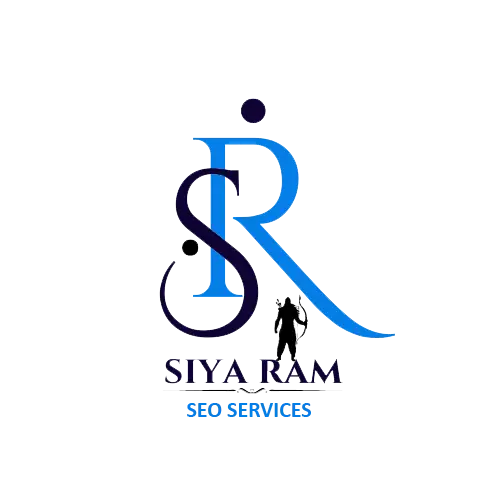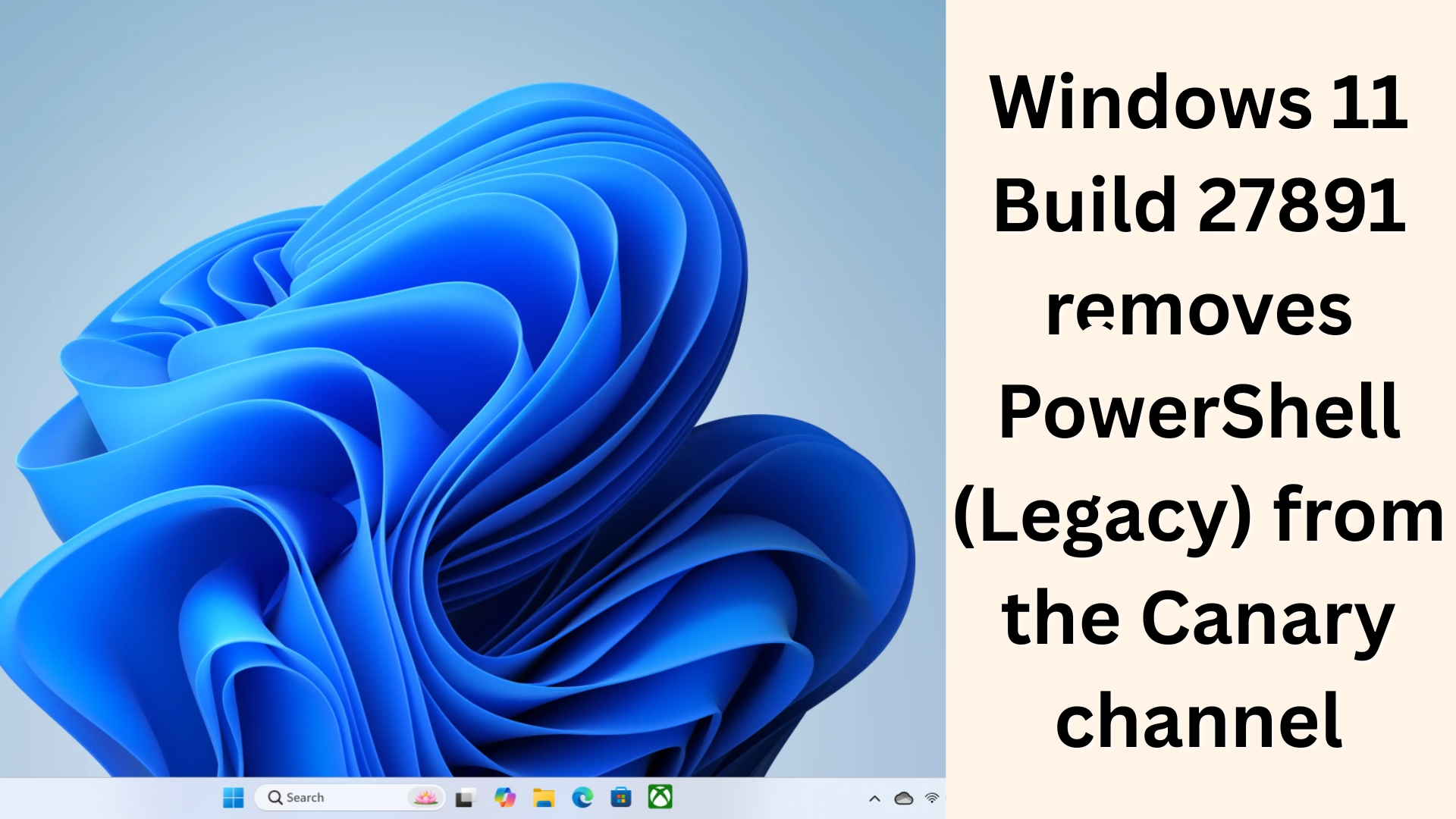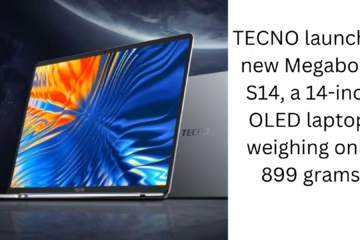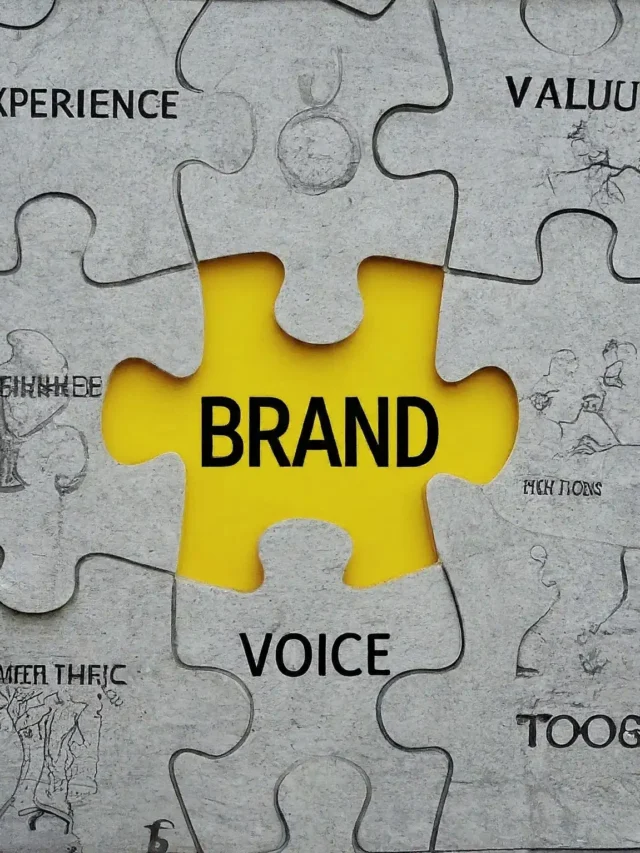Microsoft has made a big change in its Windows 11 Canary Channel Build 27891 and has completely removed PowerShell (legacy) from the system. This update is for users of the development version of Windows, but its effect can also be seen in the Stable Build shortly.
In this article, we will understand in detail why PowerShell was removed in Build 27891, what its advantages and disadvantages are, and what users should use as an alternative.
Reason for removing PowerShell (Legacy)
Microsoft has been constantly updating its modern Windows components for the past few years. Old tools and services, which no longer fit with modern technologies, are being phased out.
PowerShell (Legacy) was the old scripting language and command-line shell for Windows, used by IT admins and power users for automation. But now it is being replaced by PowerShell 7+ (PowerShell Core), which is cross-platform and based on .NET Core.
PowerShell Legacy vs PowerShell 7+
| Features | PowerShell (Legacy) | PowerShell 7+ (Core) |
| —————– | ———————– | ————————— |
| Platform Support | Windows only | Windows, Linux, macOS |
| Framework | .NET Framework | .NET Core |
| Updates | Via Windows Update | Requires separate installation |
| Performance | Old and slow | Fast and better |
| Community Support | Limited | Active and updated |
It is clear from this comparison that adopting PowerShell 7+ is more beneficial, especially for users who want cross-platform compatibility.
What other changes have happened in Build 27891
Windows 11 Canary Build 27891 is not limited to just removing PowerShell (legacy). This build includes several other important changes:
1. New section of System Components
All system tools can now be managed under Settings > System > System Components, in which PowerShell (legacy) is no longer present.
2. Removed from Optional Features
PowerShell (legacy) will no longer appear in the list of Optional Features, so users cannot manually reinstall it.
3. Changing the default shell in Windows Terminal
PowerShell 7+ can now be set as the default shell in Windows Terminal.
Impact of PowerShell (Legacy) Removal on IT Admins
IT professionals and system administrators who used to run scripts in PowerShell v5.1 (Legacy) will now need to update their scripts to be compatible with PowerShell 7+.
This step is also important for security as PowerShell 7+ has more security features, such as:
Improved error handling
Improved logging system
Isolated execution policies
How to get PowerShell (Legacy) back (if needed)
If a user has a specific need for PowerShell Legacy, they can reinstall it in the following ways (for advanced users only):
1. From DISM or PowerShell Command
“`powershell
DISM /Online /Add-Capability /CapabilityName:Microsoft.Windows.PowerShell.ISE~~~~0.0.1.0
“`
2. Manual Extraction from Old ISO
Extracting PowerShell files from old Windows 11 ISO
Manually copying to `System32\WindowsPowerShell\v1.0`
> Note: This method is unsupported and not recommended by Microsoft.
Benefits of Modern PowerShell
With the arrival of PowerShell 7+, the utility of PowerShell is no longer limited to Windows, but now it has become a modern, fast, and secure tool. Some of its major advantages are:
Cross-Platform Support: Now can run on Linux and macOS as well.
Open Source: Available on GitHub, community-driven updates.
Availability of Plugins and Modules: More modules, with new APIs.
Visual Studio Code Integration: Excellent feature for script writing and debugging.
How to install PowerShell 7+ in Windows 11
If you don’t have PowerShell 7+ on your system, you can easily install it:
1. Install from the Microsoft Store
Open Microsoft Store
Search “PowerShell 7”
Click on the install button
2. Manual Download from GitHub
[PowerShell Releases on GitHub](https://github.com/PowerShell/PowerShell)
Download the `.msi` file according to your system architecture
Install and complete the setup
3. From Windows Package Manager (Winget)
“`bash
winget install –id Microsoft.PowerShell –source winget
“`
Will anyone miss PowerShell (legacy)?
Initially, some users, especially those using older scripts and tools, may have trouble. But Microsoft is making this change with the aim of giving a better experience to new developers and more security to IT systems.
Conclusion
The removal of PowerShell (legacy) in Windows 11 Build 27891 is a big and well-thought-out move. It reflects Microsoft’s strategy in which it is moving towards making its operating system faster, more secure, and modern.
Want to grow your website organically? Contact us now
Frequently Asked Questions (FAQ) – Questions related to Windows 11 Build 27891 and PowerShell (Legacy) removal
Question 1: What is Windows 11 Build 27891?
Answer: Windows 11 Build 27891 is a Canary Channel update, released by Microsoft for users who test development versions of upcoming versions of Windows. It includes many new features and changes.
Question 2: Has PowerShell (Legacy) been completely removed?
Answer: Yes, in Build 27891, Microsoft has removed PowerShell (Legacy) from the system. It can no longer be seen in Optional Features or Settings.
Question 3: What was PowerShell (Legacy)?
Answer: PowerShell (Legacy), also known as PowerShell v5.1, was a classic command-line shell and scripting environment for Windows used for Windows-specific automation.
Question 4: Which PowerShell version should we use now?
Answer: Now it is recommended by Microsoft to use PowerShell 7+ (also known as PowerShell Core). This new version is cross-platform, more secure, and modern.
Question 5: Can PowerShell (Legacy) be reinstalled?
Answer: No, for normal users. Advanced users can install it manually using the DISM command or from an older Windows ISO, but it is not recommended by Microsoft.
Question 6: How to install PowerShell 7+ in Windows 11?
Answer: You can install PowerShell 7+ in three ways:
1. From the Microsoft Store
2. By downloading the MSI installer from GitHub
3. From the Windows Package Manager (Winget)
Question 7: Will my old scripts work in PowerShell 7+?
Answer: Some scripts may work, but many may need to be updated to support new syntax or modules.
Question 8: Will this change come to future stable Windows 11 builds?
Answer: Yes, it is likely that these changes made in the Canary Channel will be implemented in future stable builds as well. Microsoft’s policy is to roll out major features to the stable version after testing in Canary.
Question 9: Is PowerShell 7+ secure?
Answer: Yes, PowerShell 7+ is built on .NET Core and has improved security, performance, and update support.
Question 10: How to set the Default PowerShell in Windows Terminal?
Answer: Open Windows Terminal > Go to Settings > Startup section and select PowerShell 7 in “Default Profile”.












